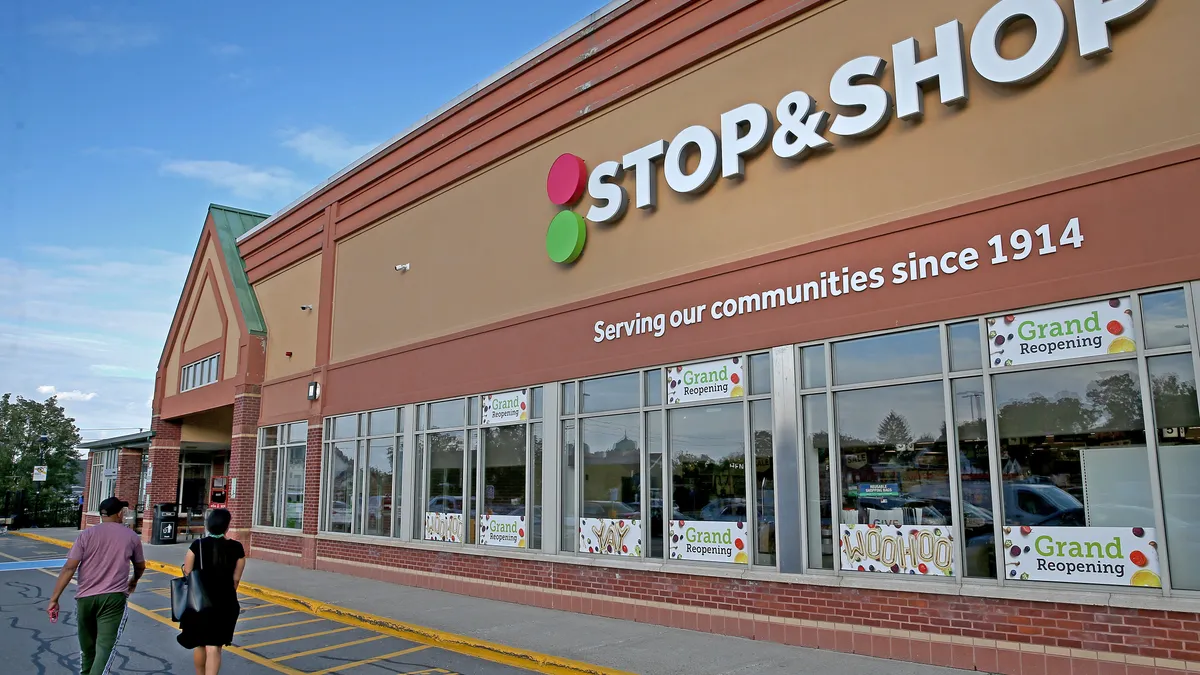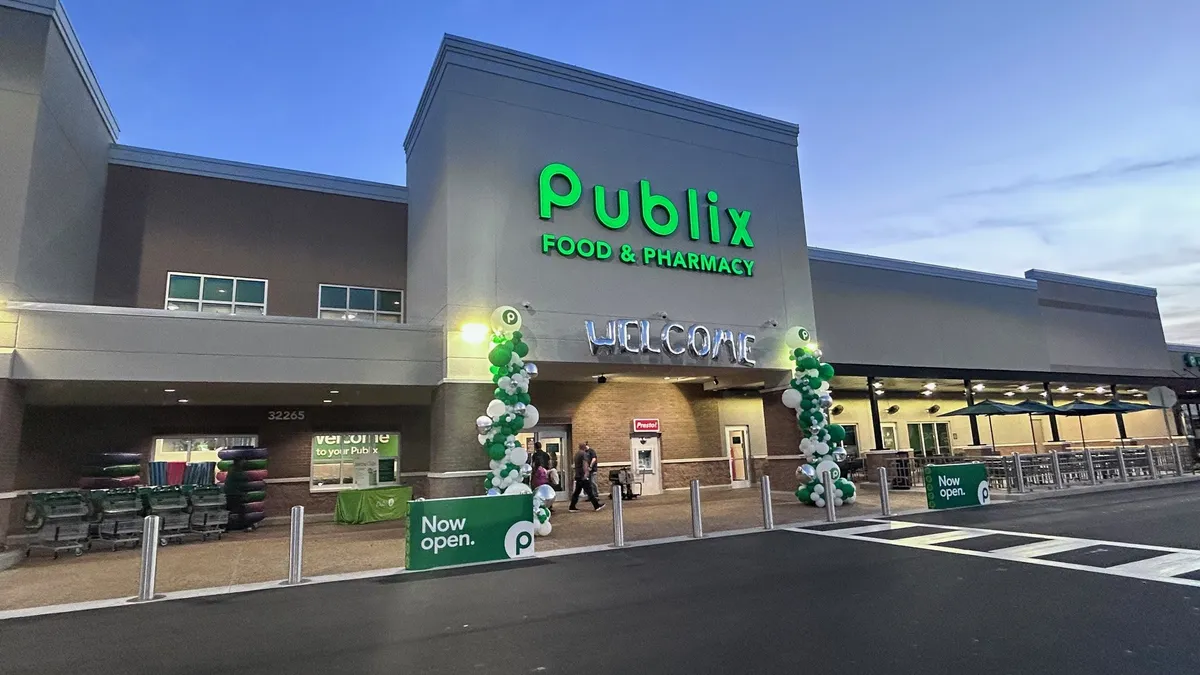Over the past year, RadioShack, Westinghouse Electric Company, Eastern Outfitters, The Limited, Aquion Energy and many others announced they were filing for bankruptcy.
In the first three months of 2017 alone, nine retailers have filed for Chapter 11 bankruptcy protection. If this trend continues, bankrupt retailers will hit the highest annual total since the Great Recession. The number of retailers on Moody's distressed list is also headed toward a record.
“A vast majority of the companies that have filed bankruptcy in the last few years have been energy and commodity companies — oil and gas, coal, metals and mining. Many of these firms took on debt when commodity prices were rising to meet that rising demand, so when prices fell it left these businesses with less cash generation,” Philip Emma, senior credit analyst at Debtwire, told Food Dive in an email.
“The retailers that are in trouble have been challenged by changes in how people shop, changes in fashion and leveraged buyouts that haven’t worked out because of cyclical changes,” he said.
Despite the poor financial performance in other industries, food manufacturers aren’t as prone to bankruptcies. There are a few exceptions to the rule — Hostess had two Chapter 11 bankruptcies and a Chapter 7 bankruptcy, and Atkins Nutritionals and Pure Foods have both been through it. But for the most part, while food companies get in financial trouble, they seldom file for bankruptcy.
“Food companies generally have not had that boom/bust industry cycle where rising demand and prices leads to a mass increase in debt fueled investment,” Emma said. “Consumer tastes do change, but there is more stability in food than, say, natural gas pricing or teen-focused apparel.”
While there is volatility in food prices and fluctuations in supply that impact margins, thanks to an active futures market for commodity crops, there are opportunities to minimize the negatives. The food and beverage industry can also absorb unprofitability in certain segments of their companies because commodity pricing changes don’t affect them too greatly.
“Consumer tastes do change, but there is more stability in food than, say, natural gas pricing or teen-focused apparel.”

Philip Emma
Senior credit analyst, Debtwire
Many food companies are diversified, offering a variety of products. Emma said that a portfolio of brands can help a company in financial distress because it provides the ability to raise cash through an asset sale.
Ellis Watson is a corporate and securities attorney who advises food industry businesses, and a partner at Rutan & Tucker LLP. From his experience, he said, food companies do go into bankruptcy, but are often able to work out company sales through a state law contract process — where titles and property custody and control are transferred to third parties — and avoid the more formal bankruptcy proceedings.
Senior creditors — usually lenders who hold some of a company's collateral — also play a role.
“The other thing to note is that food companies, by their nature, often have working capital lines with senior creditors, and the senior secured creditor has much to say about how a defaulting company works out its debt in or out of bankruptcy,” he told Food Dive.
Legal matters
An almost-century-old law makes it more difficult for food companies to file for bankruptcy.
Ken Rosen, bankruptcy partner at Lowenstein Sandler, said that the Packers and Stockyards Act of 1921 requires that certain food suppliers be fully paid as opposed to receiving a smaller or discounted payment.
“So, if a company (debtor) must pay a lot of its vendors in full, that dramatically reduces the benefit of a bankruptcy filing,” he told Food Dive by email. “This would not be applicable where a company has a lot of institutional indebtedness on its balance sheet — such as bondholder debt or debt due to vendors that do not supply fresh or frozen fruits or vegetables.”
Rosen said it’s easy to imagine a case involving a food distributor or manufacturer that has a lot of debt owed to the bank — loans — or institutions — bonds — on its balance sheet, as well as to fruit and vegetable suppliers.
“In a restructuring [of the debt], the debtor would have to obtain concessions from the bank and bondholders and may not be able to get any relief from fruit and produce suppliers,” he said. “If the bank and bond debt is large enough so that a [quick fix] facilitates enough working capital, then a bankruptcy or else an out-of-court restructuring makes sense. Since there are typically relatively few banks and bondholders compared to the number of fruit and produce suppliers, an out-of-court restructuring is likely to be more practical [than a bankruptcy filing].”
Not all food companies going through bankruptcy deal with fruits and vegetables. Rosen said the bankruptcy of Hostess was reportedly caused by high labor costs.
“It also had an outmoded means of distribution. In the second bankruptcy, the assets were sold off and the buyer started fresh with a clean balance sheet and new contracts,” he said. “The Hostess that you see today is a completely different company than the one that was previously in bankruptcy. ...In other words, buyers acquired the old Hostess’ assets without having to take on the old Hostess’ baggage and burdens.”
“Food companies benefit from having less of the conditions that cause a buildup in debt and aggressive expansion, and when they get into trouble, they often have a way out through assets that can be monetized or consolidation with competitors,” Emma said.
Coming out of bankruptcy
As Hostess has proven, declaring bankruptcy doesn’t have to mean the end of a food company. Many companies come out of bankruptcy stronger than they were in the first place.
“They can still exist and the bankruptcy process is a vehicle to that can be used to fix or eliminate the bad parts,” Emma said. “How difficult it is to get out of bankruptcy really depends on the amount of competing interests there are in the bankruptcy case. The more parties involved and the more diverse the interests of the various parties can add to complexity.”
“Food companies benefit from having less of the conditions that cause a buildup in debt and aggressive expansion, and when they get into trouble, they often have a way out through assets that can be monetized or consolidation with competitors.”

Philip Emma
Senior credit analyst at Debtwire
Regardless of whether a case is complex or not, the company has to show it can be economically viable after exiting bankruptcy.
Hostess used the bankruptcy process to do what it was designed for: eliminating liabilities and contracts that were impediments to the business. At the time of its latest bankruptcy, Hostess had approximately $2 billion in unfunded pension liabilities owed to its various unions’ workers.
“The business, now known as Hostess Brands, is in reality a new company that was able to buy the cake business of ‘old Hostess’ but without taking on the legacy liabilities that challenged the prior corporation,” Emma said. “A general rule in bankruptcy investing is to separate situations that are bad businesses from those that are just bad balance sheets. The cake business of Hostess had value as a brand. It was the liabilities that were the problem.”


















